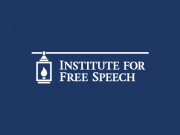Yesterday, the American Bar Association’s Taxation Section submitted comments on the IRS’s proposed regulations governing political activity by section 501(c)(4) organizations. As one would expect, it is a thorough and professional document. The contrast with the amateurish IRS effort that necessitated these comments is stark.
While the comments should be read in their entirety, three things stand out:
First, the ABA demolishes the sophistic argument, made by some, that because section 501(c)(4) organizations must be operated “exclusively” for social welfare, they should not be allowed to engage in any political activity (however defined). As the comments note: “There is ample support that permitting some degree of political intervention activity by section 501(c)(4) organizations does not undermine Congressional intent.” The comments go on to support this statement with references to the Supreme Court, five federal courts of appeals, and both Congressional and regulatory action going back to the 1950’s.
Second, the ABA considers four scenarios “as to what ‘primary’ social welfare purposes or activities should mean.” These range from “zero” non-social welfare (read: political) activity to “less than half.” Many commentators will likely note that the ABA has “not reached a consensus” on this point, and that a 2004 ABA task force suggested “a ‘bright line’ 40% limit on political campaign activity, measured by monetary expenditures.” Accordingly, the remainder of the comments presume a 40% limit.
More attention should be focused on the paragraph ending that section of the comments. As CCP and others have argued, allowing for a cap on political activity substantially below 50% would “orphan” nonprofit organizations that do some political activity, but cannot qualify as section 527 organizations because such activity is not their primary purpose. In the ABA’s words:
There is one final concern to be noted in any discussion of the appropriate limit on less-than-primary non-social-welfare activity. That concern is the absence of any tax-exempt status for an organization all of whose activities would be exempt under either section 501(c)(4) or section 527, except that it engages in more than the permitted amount of political intervention under section 501(c)(4), but less than substantially all political intervention as required by section 527. This gap will be larger the lower the limit on political intervention by 501(c) organizations is set. Should the opportunity arise for remedying this gap—perhaps through legislative proposals—we recommend the minimum level of political intervention required for section 527 exemption be adjusted to approach or mirror the maximum under section 501(c)(4): we see no public policy justification for withholding tax-exempt status from nonprofit organizations that fall in the gap.
Put differently, if an organization spends 43% of its budget on political activity, it is not a 527 organization (which is not taxed as a corporation, but must publicly disclose its donors) because such organizations must be primarily engaged in politics, and 43% is less than half. And if the limit for section 501(c)(4) activity is 40%, as the 2004 ABA Report suggests, it would also not qualify as a (c)(4) organization. Consequently, it would lose any nonprofit status and become subject to corporate taxation.
The ABA notes that there is “no public policy justification” for this result. But, more importantly, absent some indication that Congress intended such an absurd rule (and we are aware of none), the problem posed by these “orphaned organizations” strongly suggests that Congress intended otherwise. Section 501(c)(3) charities are banned from political involvement; section 527 organizations must be primarily engaged in political activity; and section 501(c)(4) organizations sit in the middle, permitted to do some political activity, but not so much that they become 527 organizations. Perhaps unsurprisingly, this is the statutory interpretation that has held sway since the 1950’s.
Finally, the comments quite rightly take issue with the IRS’s use of the campaign finance concept of “electioneering communications:”
The Preamble notes that the [IRS draft] rule is based on federal campaign finance laws regarding disclosure of certain “electioneering” communications, and modified in order to incorporate tax law. However, the types of communication covered are far broader than those covered by FECA. As a result, the approach taken in the Proposed Regulation extends too far and will impose significant burdens on covered organizations.
But a more fundamental objection comes, once again, from an analysis of Congress’s intent. In passing the federal “electioneering communication” regime, Congress explicitly forbade the IRS from doing what it has attempted to do here. Subsection 7 of the statute governing electioneering communications reads, in its entirety:
Nothing in this subsection may be construed to establish, modify, or otherwise affect the definition of political activities or electioneering activities (including the definition of participating in, intervening in, or influencing or attempting to influence a political campaign on behalf of or in opposition to any candidate for public office) for purposes of the Internal Revenue Code of 1986.
2 U.S.C. § 434(f)(7). This is pretty clear language, for a federal statute. It is a shame that, in noting the inappropriate way the IRS attempted to incorporate campaign finance law, that ABA failed to note that Congress had foreseen (and forbade) that effort.














